 6种象征好运的中国食物
6种象征好运的中国食物
6 SYMBOLIC CHINESE FOODS THAT BRING GOOD LUCK
译文简介
食物是中国文化的重要组成部分,中国食物具有象征意义。象征吉祥的食物,吃了能带来好运。
正文翻译
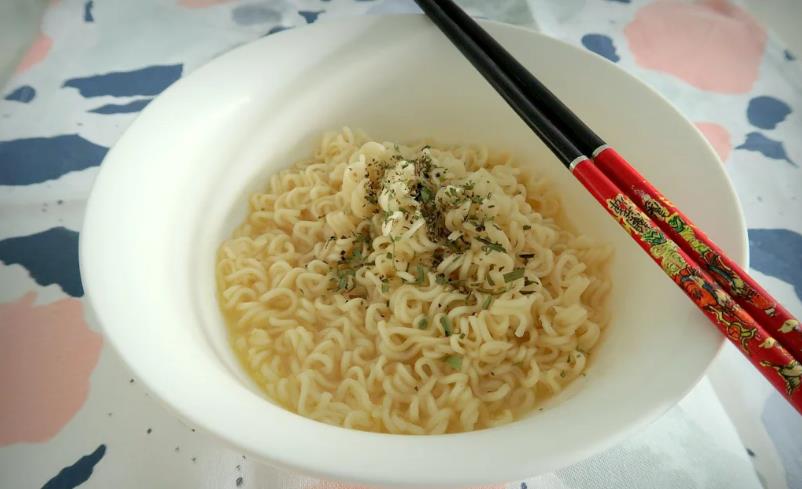
1. Rice and noodles
While rice symbolises wealth, fertility and abundance, noodles symbolises longevity and long life. A bowlof white rice or noodles is usually served alongside Chinese dining.
1. 米饭和面条
大米象征着财富、生育和富足,面条象征着长寿。白米饭或面条经常会出现在中餐里。
Rice has a long history in China. Around 1100BC, aristocrats in the Zhou dynasty were the ones who were able to afford rice. Later everyone relied on rice for food as it's easy to cook and store.
大米在中国有着悠久的历史。大约公元前1100年,周朝的贵族才能买得起大米。后来大家都依靠大米作为食物,因为它很容易烹饪和储存。
大米在中国有着悠久的历史。大约公元前1100年,周朝的贵族才能买得起大米。后来大家都依靠大米作为食物,因为它很容易烹饪和储存。
Today rice is one of China's top commodities: China relies on rice production to sustain its economy, is responsible for about 30% of global rice production, and eats more than twice as much rice as Japan.
如今,大米是中国最重要的大宗商品之一:中国依靠大米生产来维持经济,占全球大米产量的30%左右,消费量是日本的两倍多。
如今,大米是中国最重要的大宗商品之一:中国依靠大米生产来维持经济,占全球大米产量的30%左右,消费量是日本的两倍多。
While rice is mostly cultivated in the south of China, noodles are cultivated more easily in the north as that's where wheat grains thrive due to climatic differences. Like rice, noodles have fed China for thousands of years and are economical energy, cereal food. Both foods take months to cultivate and rice especially is hard to harvest by hand – all the more valued and auspicious it is considered.
水稻主要在南方种植,而小麦在北方更容易种植,因为北方气候不同,小麦在那里生长得很茂盛。像大米一样,面条已经养活了中国几千年,这种谷物食品是经济的能源。这两种食物都需要几个月的时间来种植,尤其是大米很难用手工收割,所以人们认为它更有价值也更吉祥。
My Chinese Malaysian family always say they feel weird if they don't eat rice every day. If there isn't white rice on the table at the restaurant, my folks like ordering yangzhou fried rice (扬州炒饭). Call me a bad Asian but I have gone weeks without eating rice and I'm okay with that.
我的马来西亚华人家庭总是说,如果他们每天不吃米饭就会觉得很奇怪。如果餐馆的桌子上没有白米饭,我的家人就喜欢点扬州炒饭。你可以说我是一个糟糕的亚洲人,但我已经好几周不吃米饭了,我觉得还好吧。
水稻主要在南方种植,而小麦在北方更容易种植,因为北方气候不同,小麦在那里生长得很茂盛。像大米一样,面条已经养活了中国几千年,这种谷物食品是经济的能源。这两种食物都需要几个月的时间来种植,尤其是大米很难用手工收割,所以人们认为它更有价值也更吉祥。
My Chinese Malaysian family always say they feel weird if they don't eat rice every day. If there isn't white rice on the table at the restaurant, my folks like ordering yangzhou fried rice (扬州炒饭). Call me a bad Asian but I have gone weeks without eating rice and I'm okay with that.
我的马来西亚华人家庭总是说,如果他们每天不吃米饭就会觉得很奇怪。如果餐馆的桌子上没有白米饭,我的家人就喜欢点扬州炒饭。你可以说我是一个糟糕的亚洲人,但我已经好几周不吃米饭了,我觉得还好吧。
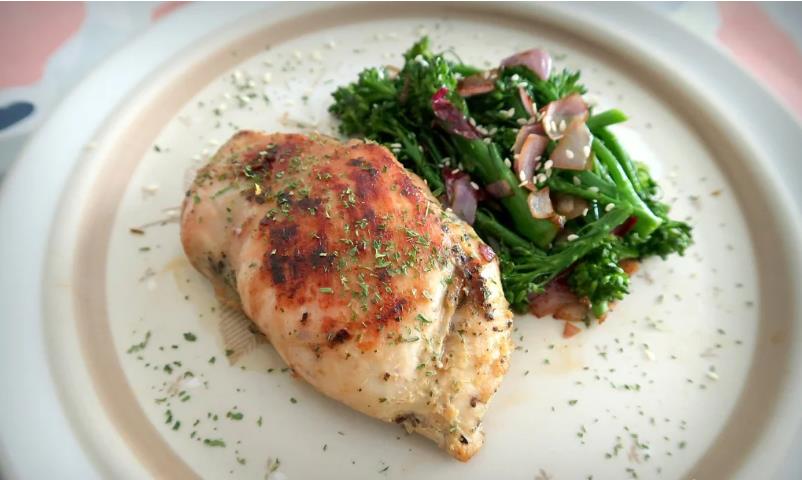
2. ChickenIn
Chinese culture, a whole chicken complete with head, feet and tail symbolises unity, completeness and togetherness. Chicken also resembles the dragon and phoenix, further symbolising power and strength.
2. 鸡
中国文化中,一只完整的鸡包括头、脚和尾巴,象征着团结、完整和团聚。鸡也像龙和凤凰,进一步象征权力和力量。
There are endless ways to serve chicken in Chinese cuisine. There's steamed yellow-skinned chicken which is popular during Chinese New Year Eve. Chicken is also common in Chinese stir-frys with oyster sauce, Malaysian mango chicken and cashew nut chicken.
在中餐里,有无数种方法来处理鸡肉。有一种蒸黄皮鸡,在农历新年前夕很受欢迎。鸡肉在中国用蚝油炒、马来西亚芒果鸡和腰果鸡中也很常见。
在中餐里,有无数种方法来处理鸡肉。有一种蒸黄皮鸡,在农历新年前夕很受欢迎。鸡肉在中国用蚝油炒、马来西亚芒果鸡和腰果鸡中也很常见。
Many Chinese are fond of eating chicken head and feet for their gritty texture. This is in contrast with chicken breast which some Chinese reckon is "the meat of fools', tasting like wood. Personally chicken breast is my favourite meat.
许多中国人都喜欢吃鸡头和鸡脚,因为它们的质地紧实。鸡胸肉很不一样,有些中国人认为鸡胸肉很柴,吃起来像木头。不过鸡胸肉是我个人最喜欢的肉。
许多中国人都喜欢吃鸡头和鸡脚,因为它们的质地紧实。鸡胸肉很不一样,有些中国人认为鸡胸肉很柴,吃起来像木头。不过鸡胸肉是我个人最喜欢的肉。
Aside from chicken, duck is also popular in Chinese cuisine. Peking duck is historically an iconic dish in Chinese culture, prepared for royalty and later served to everyone else like rice. China produces around 83% of duck meat in the Asian region. In general, duck is more expensive than chicken as it's the rarer of the two birds.
除了鸡肉,烤鸭在中国菜中也很受欢迎。北京烤鸭历来是中国文化中的一道标志性菜肴,原本是为皇室烹制的,后来就像米饭一样能被普通人享用了。中国生产了亚洲地区约83%的鸭肉。一般来说,鸭肉比鸡肉贵,因为它是两种禽类中比较稀有的。
除了鸡肉,烤鸭在中国菜中也很受欢迎。北京烤鸭历来是中国文化中的一道标志性菜肴,原本是为皇室烹制的,后来就像米饭一样能被普通人享用了。中国生产了亚洲地区约83%的鸭肉。一般来说,鸭肉比鸡肉贵,因为它是两种禽类中比较稀有的。
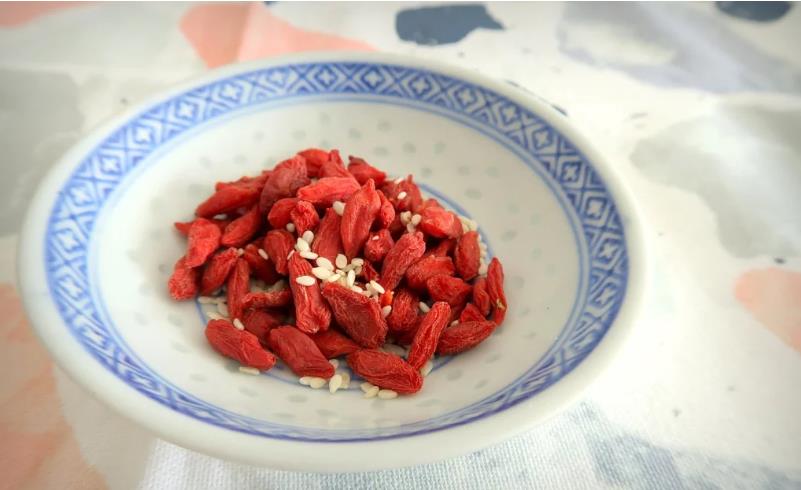
3. Dates and sesame seeds
Dates and goji berries are often used tosweeten Chinese herbal soups, steamed chicken and teas.
3.红枣芝麻
枣子和枸杞常被用来甜的中草药汤、蒸鸡和茶。
Dark red dates are high in vitamin A, B and C. Goji berries have been touted as antioxidant superfoods helpingto regulate stress, sleep cycles and suppress cancerous cells.
深红枣富含维生素A、B和c。枸杞被吹捧为有助于抗氧化的超级食物调节压力,睡眠周期和抑制癌细胞。
深红枣富含维生素A、B和c。枸杞被吹捧为有助于抗氧化的超级食物调节压力,睡眠周期和抑制癌细胞。
Sesame seeds are usually found alongside dates-such as crispy sesame jujube ball snacks and sprinkled overl meats with jujube-infused sauce. Both dates and sesame seeds bring good luck, wealth and fertility, and bring warmth to the body.
芝麻通常和枣一起吃,比如酥脆的芝麻枣球小吃和撒在肉上的枣酱。红枣和芝麻都能带来好运、财富和生育,并给身体带来温暖。
芝麻通常和枣一起吃,比如酥脆的芝麻枣球小吃和撒在肉上的枣酱。红枣和芝麻都能带来好运、财富和生育,并给身体带来温暖。
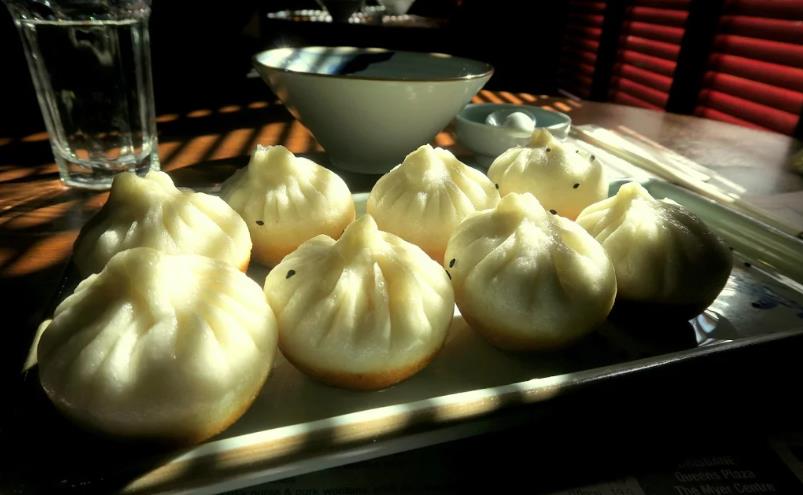
4. Dumplings
Dumplings are one of the most important foods in Chinese culture. Dumplings are a staple during ChineseNew Year
4. 饺子
饺子是中国文化中最重要的食物之一。饺子是中国新年期间的主食。
Dumplings often resemble traditional gold inglots.They are usually shared at the table, representing togetherness and wealth.
饺子通常像传统的金块。他们通常在餐桌上分享,代表着团聚和财富。
原创翻译:龙腾网 http://www.ltaaa.cn 转载请注明出处
饺子通常像传统的金块。他们通常在餐桌上分享,代表着团聚和财富。
原创翻译:龙腾网 http://www.ltaaa.cn 转载请注明出处
Interestingly enough, many seem content to just eat dumplings and more dumplings, no need for other dishes. Most dumplings really are just that good on their own.
有趣的是,许多人似乎只吃饺子就够了,也不需要其他的菜。大多数饺子本身就很好吃。
有趣的是,许多人似乎只吃饺子就够了,也不需要其他的菜。大多数饺子本身就很好吃。
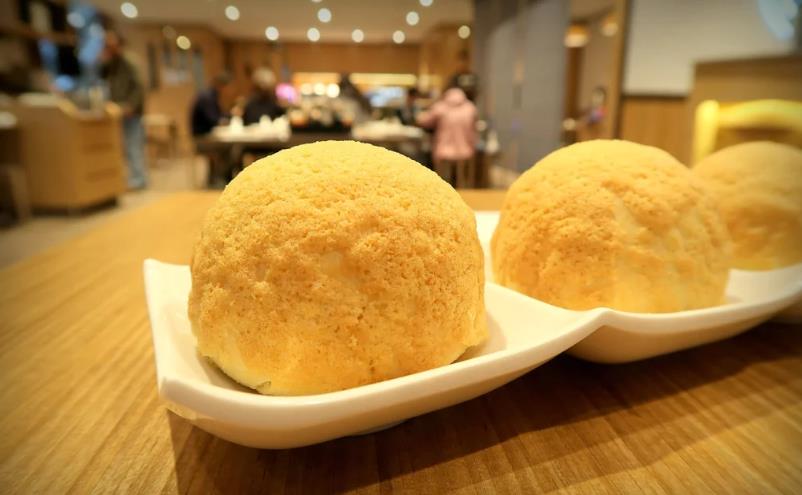
5. Green leafy vegetables
There's usually a vegetable dish with each Chinese meal. Bok choy/Chinese celery (xião bái cài, 小白菜), gai lan/Chinese broccoli (jiè làn, 芥蘭) and water spinach are some popular greens in Chinese cooking.
5. 绿叶蔬菜
每餐中餐通常都有一道素菜。白菜,芥兰和菠菜是中国烹饪中比较受欢迎的蔬菜。
The bok choy is probably the most popular and well-known. Native to China and first cultivated along the Yangtze River Delta, it is nicknamed 'soup spoon' for its large leaves shaped like a spoon.
白菜可能是最受欢迎和最知名的。它原产于中国,最早在长江三角洲种植,因其大叶子形状像勺子而被昵称为“汤勺”。
白菜可能是最受欢迎和最知名的。它原产于中国,最早在长江三角洲种植,因其大叶子形状像勺子而被昵称为“汤勺”。
Raw and uncooked vegetables aren't eaten too often among the Chinese. Good sanitation has been a problem in China for a long time, and food here is preferably cooked over heat to minimise bacteria. From a traditional Chinese medicine perspective, uncooked and ‘cold’ foods are not best for digestion.
中国人不常吃生的和未煮熟的蔬菜。长期以来,卫生条件不好一直是中国的一大问题,这里的食物最好是加热烹饪,以尽量减少细菌。从中医的角度来看,生的和“冷”的食物不好消化。
中国人不常吃生的和未煮熟的蔬菜。长期以来,卫生条件不好一直是中国的一大问题,这里的食物最好是加热烹饪,以尽量减少细菌。从中医的角度来看,生的和“冷”的食物不好消化。
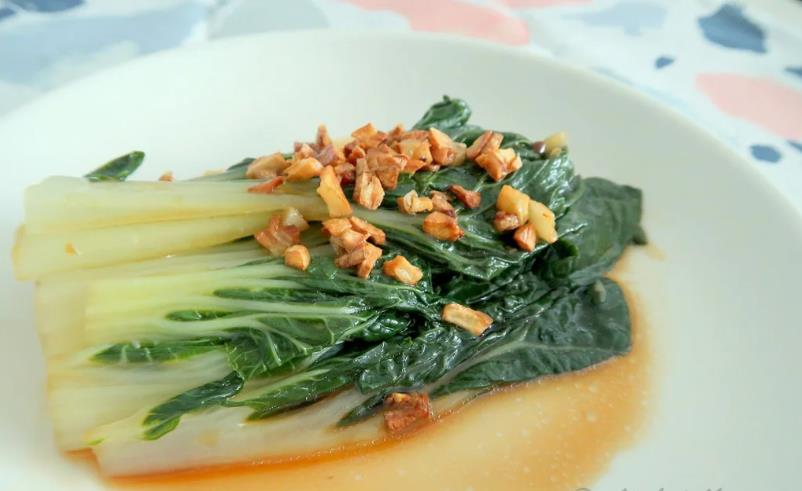
6. TofuTofu
traditionally symbolises death in Chinese culture. Most tofu is white (on the inside) and white is synonymous with death - and tofu sometimes isn't served during festivals. On the other hand, some suggest eating tofu sounds like eating a mouthful of ‘fú' (福) or good fortune.
6. 豆腐
豆腐在中国传统文化中是死亡的象征。大多数豆腐里面是白色的,白色是死亡的代名词,所以有时在节日期间不吃豆腐。另一方面,一些人认为吃豆腐听起来就像吃了一口“福”或好运。
There are many varieties of tofu such as bean curd, silken tofu, and stinky tofu. In everyday Chinese cooking tofu is tossed in stir fries and simmered in hotpots. Sichuan mapo tofu which is bean curd in chilli oil is one of the most popular tofu dishes.
豆腐有很多种,如豆腐、绢豆腐和臭豆腐。在中国的日常烹饪中,豆腐用于炒菜或者火锅。四川麻婆豆腐是一种辣椒油和豆腐一起制作的菜,是最受欢迎的豆腐菜肴之一。
豆腐有很多种,如豆腐、绢豆腐和臭豆腐。在中国的日常烹饪中,豆腐用于炒菜或者火锅。四川麻婆豆腐是一种辣椒油和豆腐一起制作的菜,是最受欢迎的豆腐菜肴之一。
评论翻译
很赞 ( 3 )
收藏
I think everyone loves Chinese food. One of the biggest strengths of Chinese cooking I think is the variety of vegetables, meat, fish, and seafood that are used. Even though I like noodles and dumplings and dim sum, I try not to eat them too often. They're delicious, but rich and heavy on carbohydrates. It's my impression that Chinese cooking does a good job with veggies, fish and seafood because they insist on freshness, they don't overcook them, and they seldom smother them with heavy sauces.
我想每个人都喜欢中国菜。我认为中国烹饪最大的优势之一是蔬菜、肉、鱼和海鲜的多样性。虽然我喜欢面条、饺子和点心,但我尽量不经常吃。它们很美味,但富含碳水化合物。在我的印象中,中国烹饪在蔬菜、鱼和海鲜方面做得很好,因为他们为了保持鲜味,不会过度烹饪,也很少用过多的酱汁去掩盖。
most people like chinese food. apart from fried rice and noodle dishes, shrimp siomai is my favorite
大多数人喜欢中国菜,除了炒饭和炒面外,虾仁烧麦是我的最爱
原创翻译:龙腾网 http://www.ltaaa.cn 转载请注明出处
:I love Chinese food, though I didn't realize it until I moved away from Hong Kong for university. I find myself craving Chinese food (the taste of home!) quite often now. I totally agree with you on chicken breast . Dumplings are also one of my favourite foods!It was really interesting to learn about the symbolism behind Chinese food. While I knew about symbolism of food eaten during special occasions or holidays, I had no idea that the food I used to eat daily held so much significance in Chinese culture!
我喜欢中国菜,直到我离开香港上大学才意识到这一点。我发现自己现在很想吃中国菜(家乡的味道!)我完全同意你对鸡胸肉的看法。饺子也是我最喜欢的食物之一!了解中国食物背后的象征意义真的很有趣。虽然我知道在特殊场合或节日吃的食物的象征意义,但我不知道我以前每天吃的食物在中国文化中有这么重要的意义!
Wow that's yummy!
哇,真好吃!